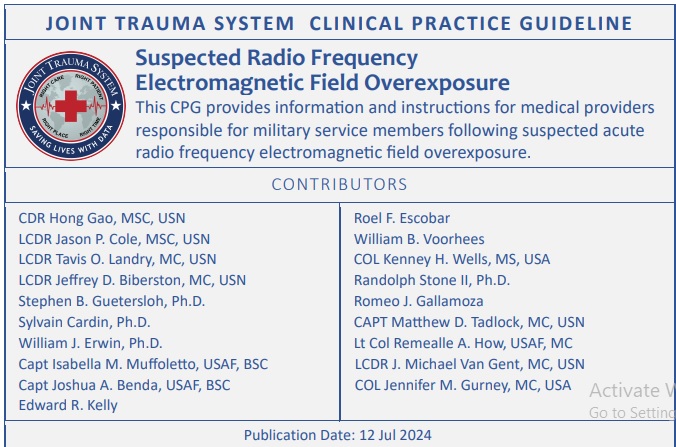
Guideline Only/Not a Substitute for Clinical Judgment
The 17 page guideline is available at https://jts.health.mil/assets/docs/cpgs/Radio_Frequency_EMF_Overexposure_CPG_12_Jul_2024_ID98.pdf
(Snippet) Introduction
Acute Radio Frequency Electromagnetic Field (RF-EMF) overexposures pose safety hazards to service members.
Overexposures caused by RF-EMF emitting sources (e.g., navigation or radar systems, electromagnetic countermeasures, or Directed Energy EMF Weapons) can compromise essential military functions.1
An overexposure is defined as exposure to RF-EMF radiation in excess of Exposure Reference Level (ERL) limits at which harmful health effects may occur. Because the ERL limits also have a built-in safety margin, a relatively low amount of overexposure may not result in bodily injury; but the probability of injury increases with rising exposure dose above the ERL limits.2,3
The goals of this clinical practice guideline are to review potential injuries and adverse health effects related to RF-EMF overexposure at frequencies between 100 kilohertz (kHz) and 300 gigahertz (GHz), and to establish a clinical care guideline for first-line medical responders and military health care providers. Care for overexposures to frequencies outside of this range (e.g., electric shock or contact burns) will not be addressed by this CPG.
This CPG was developed based on expert consensus to include key elements of the service member’s medical history, examination, disposition, and medical record coding following RF-EMF overexposure. In general, early recognition and treatment of potential injuries are essential to maintain optimal treatment outcome. Timely reporting is vital to assess operational impact and carry out additional medical evaluation and care.
